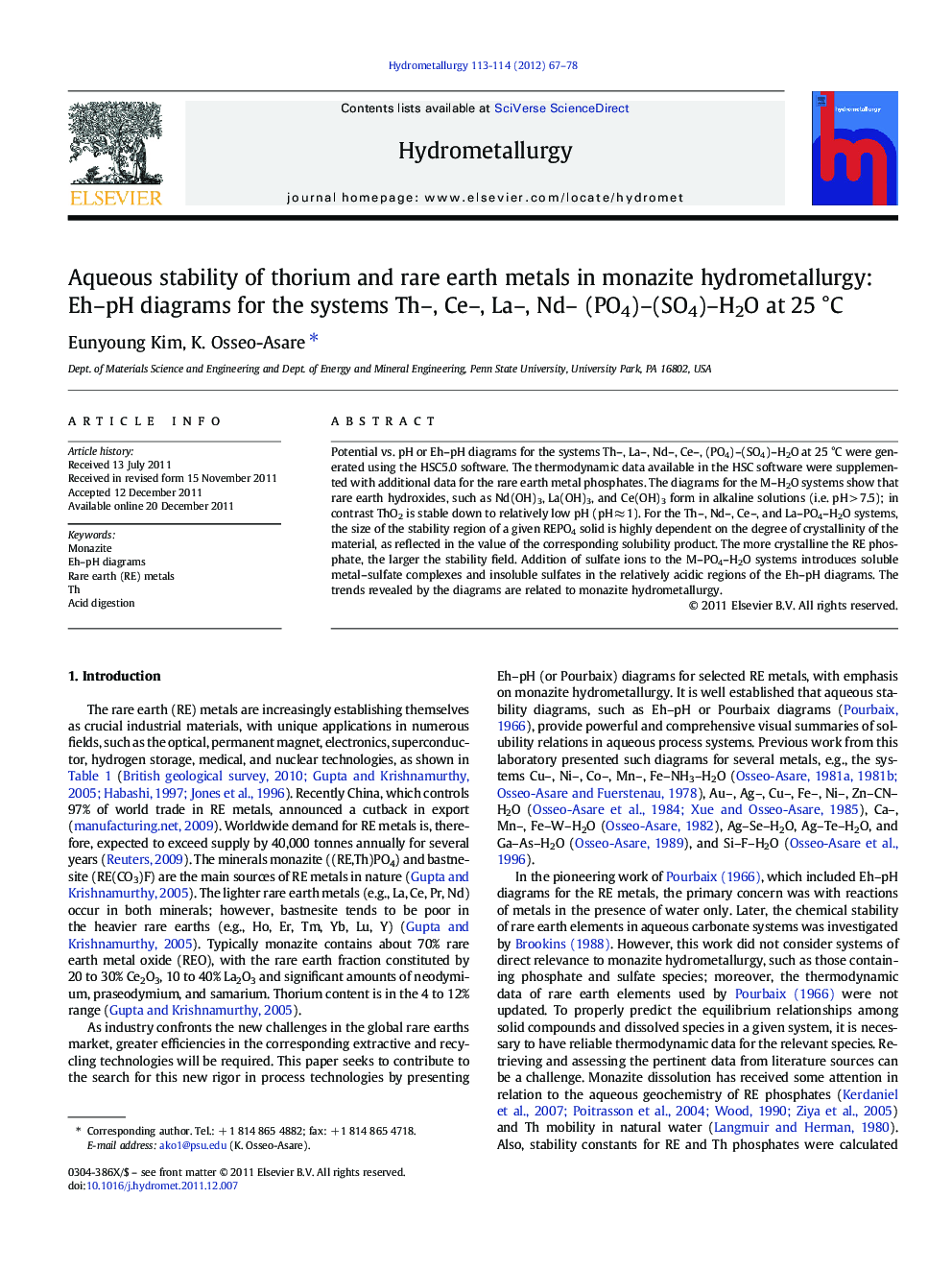| Article ID | Journal | Published Year | Pages | File Type |
|---|---|---|---|---|
| 212576 | Hydrometallurgy | 2012 | 12 Pages |
Potential vs. pH or Eh–pH diagrams for the systems Th–, La–, Nd–, Ce–, (PO4)–(SO4)–H2O at 25 °C were generated using the HSC5.0 software. The thermodynamic data available in the HSC software were supplemented with additional data for the rare earth metal phosphates. The diagrams for the M–H2O systems show that rare earth hydroxides, such as Nd(OH)3, La(OH)3, and Ce(OH)3 form in alkaline solutions (i.e. pH > 7.5); in contrast ThO2 is stable down to relatively low pH (pH ≈ 1). For the Th–, Nd–, Ce–, and La–PO4–H2O systems, the size of the stability region of a given REPO4 solid is highly dependent on the degree of crystallinity of the material, as reflected in the value of the corresponding solubility product. The more crystalline the RE phosphate, the larger the stability field. Addition of sulfate ions to the M–PO4–H2O systems introduces soluble metal–sulfate complexes and insoluble sulfates in the relatively acidic regions of the Eh–pH diagrams. The trends revealed by the diagrams are related to monazite hydrometallurgy.
► Plotting of Eh–pH diagram of rare metals by reliable selection of thermodynamic data. ► Prediction of aqueous speciation and stability of rare earth metals from monazite. ► Investigation on the relevant dissolution and precipitation process involved in the decomposition of monazite.
